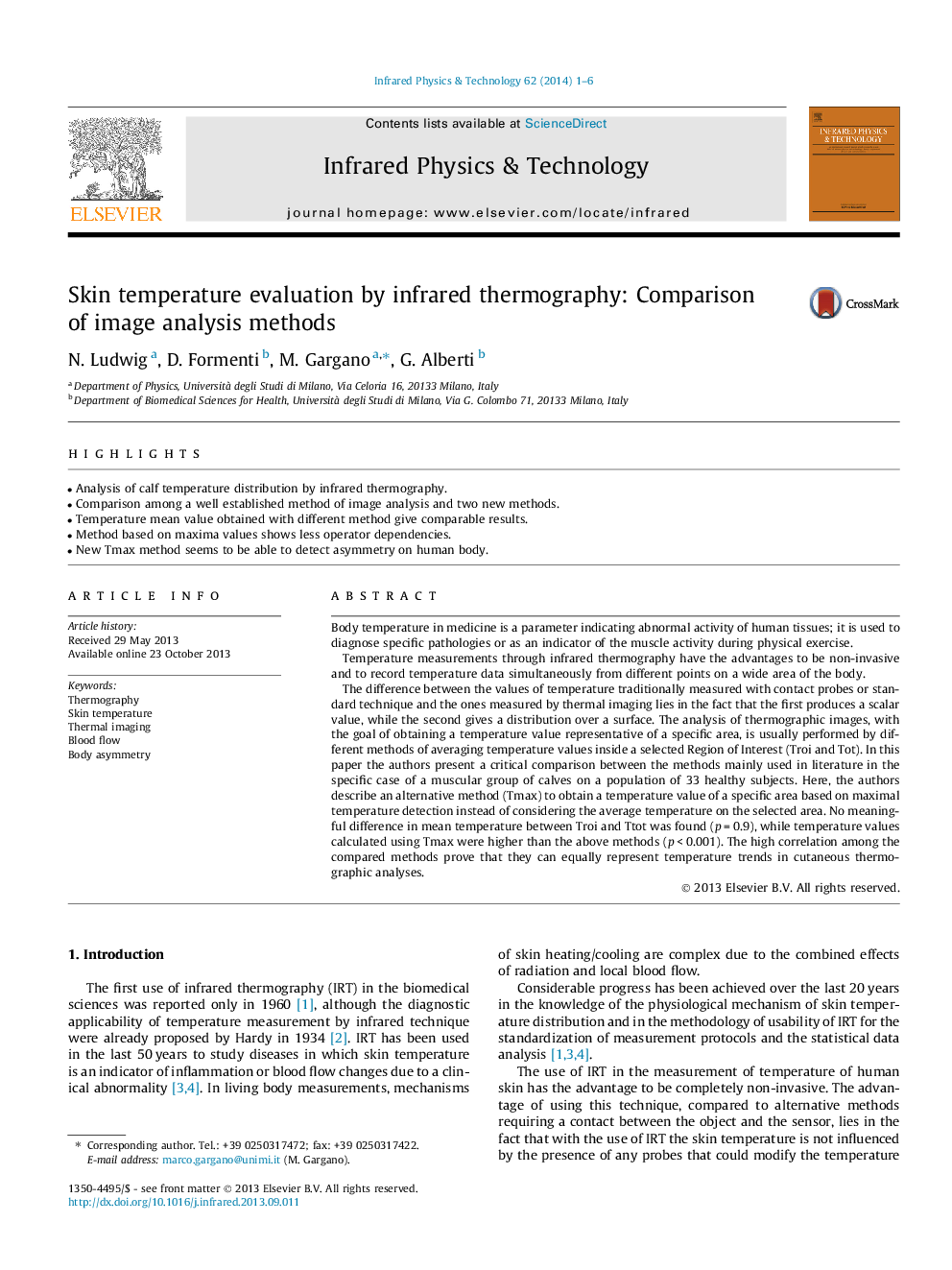| Article ID | Journal | Published Year | Pages | File Type |
|---|---|---|---|---|
| 1784315 | Infrared Physics & Technology | 2014 | 6 Pages |
•Analysis of calf temperature distribution by infrared thermography.•Comparison among a well established method of image analysis and two new methods.•Temperature mean value obtained with different method give comparable results.•Method based on maxima values shows less operator dependencies.•New Tmax method seems to be able to detect asymmetry on human body.
Body temperature in medicine is a parameter indicating abnormal activity of human tissues; it is used to diagnose specific pathologies or as an indicator of the muscle activity during physical exercise.Temperature measurements through infrared thermography have the advantages to be non-invasive and to record temperature data simultaneously from different points on a wide area of the body.The difference between the values of temperature traditionally measured with contact probes or standard technique and the ones measured by thermal imaging lies in the fact that the first produces a scalar value, while the second gives a distribution over a surface. The analysis of thermographic images, with the goal of obtaining a temperature value representative of a specific area, is usually performed by different methods of averaging temperature values inside a selected Region of Interest (Troi and Tot). In this paper the authors present a critical comparison between the methods mainly used in literature in the specific case of a muscular group of calves on a population of 33 healthy subjects. Here, the authors describe an alternative method (Tmax) to obtain a temperature value of a specific area based on maximal temperature detection instead of considering the average temperature on the selected area. No meaningful difference in mean temperature between Troi and Ttot was found (p = 0.9), while temperature values calculated using Tmax were higher than the above methods (p < 0.001). The high correlation among the compared methods prove that they can equally represent temperature trends in cutaneous thermographic analyses.
